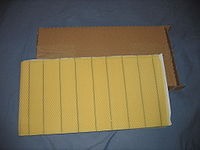
A honeycomb is a mass of hexagonal prismatic cells built from beeswax by honey bees in their nests to contain their brood and stores of honey and pollen.

A beehive is an enclosed structure in which some honey bee species of the subgenus Apis live and raise their young. Though the word beehive is used to describe the nest of any bee colony, scientific and professional literature distinguishes nest from hive. Nest is used to discuss colonies that house themselves in natural or artificial cavities or are hanging and exposed. The term hive is used to describe an artificial/man-made structure to house a honey bee nest. Several species of Apis live in colonies. But for honey production, the western honey bee and the eastern honey bee are the main species kept in hives.
Beekeeping is the maintenance of bee colonies, commonly in man-made beehives. Honey bees in the genus Apis are the most commonly kept species but other honey producing bees such as Melipona stingless bees are also kept. Beekeepers keep bees to collect honey and other products of the hive: beeswax, propolis, bee pollen, and royal jelly. Other sources of beekeeping income include pollination of crops, raising queens, and production of package bees for sale. Bee hives are kept in an apiary or "bee yard".
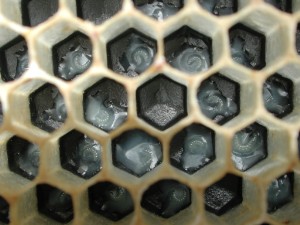
In beekeeping, bee brood or brood refers to the eggs, larvae and pupae of honeybees. The brood of Western honey bees develops within a bee hive. In man-made, removable frame hives, such as Langstroth hives, each frame which is mainly occupied by brood is called a brood frame. Brood frames usually have some pollen and nectar or honey in the upper corners of the frame. The rest of the brood frame cells may be empty or occupied by brood in various developmental stages. During the brood raising season, the bees may reuse the cells from which brood has emerged for additional brood or convert it to honey or pollen storage. Bees show remarkable flexibility in adapting cells to a use best suited for the hive's survival.

A queen bee is typically an adult, mated female (gyne) that lives in a colony or hive of honey bees. With fully developed reproductive organs, the queen is usually the mother of most, if not all, of the bees in the beehive. Queens are developed from larvae selected by worker bees and specially fed in order to become sexually mature. There is normally only one adult, mated queen in a hive, in which case the bees will usually follow and fiercely protect her.
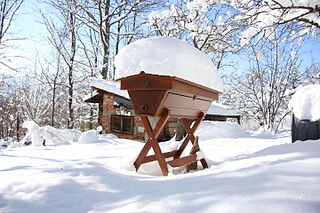
A top-bar hive is a single-story frameless beehive in which the comb hangs from removable bars. The bars form a continuous roof over the comb, whereas the frames in most current hives allow space for bees to move up or down between boxes. Hives that have frames or that use honey chambers in summer but which use management principles similar to those of regular top-bar hives are sometimes also referred to as top-bar hives. Top-bar hives are rectangular in shape and are typically more than twice as wide as multi-story framed hives commonly found in English-speaking countries. Top-bar hives usually include one box only, and allow for beekeeping methods that interfere very little with the colony. While conventional advice often recommends inspecting each colony each week during the warmer months, heavy work when full supers have to be lifted, some beekeepers fully inspect top-bar hives only once a year, and only one comb needs to be lifted at a time.
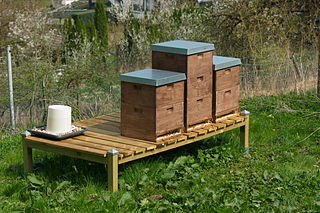
In beekeeping, a Langstroth hive is any vertically modular beehive that has the key features of vertically hung frames, a bottom board with entrance for the bees, boxes containing frames for brood and honey and an inner cover and top cap to provide weather protection. In a Langstroth hive, the bees build honeycomb into frames, which can be moved with ease. The frames are designed to prevent bees from attaching honeycombs where they would either connect adjacent frames, or connect frames to the walls of the hive. The movable frames allow the beekeeper to manage the bees in a way which was formerly impossible.

A hive frame or honey frame is a structural element in a beehive that holds the honeycomb or brood comb within the hive enclosure or box. The hive frame is a key part of the modern movable-comb hive. It can be removed in order to inspect the bees for disease or to extract the excess honey.

A honey super is a part of a commercial or other managed beehive that is used to collect honey. The most common variety is the "Illinois" or "medium" super with a depth of 65⁄8 inches, in the length and width dimensions of a Langstroth hive.

A honey extractor is a mechanical device used in the extraction of honey from honeycombs. A honey extractor extracts the honey from the honey comb without destroying the comb. Extractors work by centrifugal force. A drum or container holds a frame basket which spins, flinging the honey out. With this method the wax comb stays intact within the frame and can be reused by the bees.
Hive management in beekeeping refers to intervention techniques that a beekeeper may perform to ensure hive survival and to maximize hive production. Hive management techniques vary widely depending on the objectives.
This page is a glossary of beekeeping.

Lorenzo Lorraine Langstroth was an American apiarist, clergyman, and teacher, and considered to be the father of American beekeeping. He recognized the concept of bee-space, a minimum distance that bees avoid sealing up. Although not his own discovery, the use of this principle allowed for the use of frames that the bees leave separate and this allowed the use of rectangular frames within the design of what is now called the Langstroth hive.
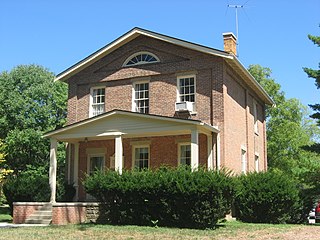
Langstroth Cottage is a historic building on the Western College campus of Miami University in Oxford, Ohio. It was designated a National Historic Landmark on June 22, 1976. The cottage, built in 1856, is now the home for the Oxford office of the Butler County Regional Transit Authority. It was purchased for Beekeeper L. L. Langstroth in 1859, and he lived there for the next 28 years, conducting research and breeding honey bees.

Honey extraction is the central process in beekeeping of removing honey from honeycomb so that it is isolated in a pure liquid form.

Thomas White Woodbury was an English journalist and beekeeper, devoting himself entirely to beekeeping from 1850 onwards after the death of his son. He was responsible for introducing Ligurian or Italian bees to Britain in 1859.
In 1859 Woodbury imported a yellow Ligurian queen from Mr Hermann in Switzerland. She arrived by train on 3 August in a rough deal box with about a thousand worker bees. Woodbury had prepared an 8-bar hive, including four frames of honey and pollen plus one empty comb, and he gently shook the newcomers into this. Then he took a skep of local black bees weighing 34.5 pounds and shook them out in clusters on four cloths spread out on the grass; helped by his friend Mr Fox. He found and took out the queen, before placing the hive with Ligurian queen and bees over the shaken bees. Alas they fought, and in the morning there were many dead bees, but he hoped for the best. By 17 August, great loads of pollen were going in, and he knew that the first queen from outside Britain had been introduced. When he wrote about this in the 'Cottage Gardener' he had letters from all over the country asking for stocks from this queen for next year, so at once he telegraphed for two more queens and they arrived on 27 August having been four days on the way. Although most of the bees were dead, each package had their queen still living, and each queen was successfully introduced to a colony. Ron Brown Great Masters of Beekeeping
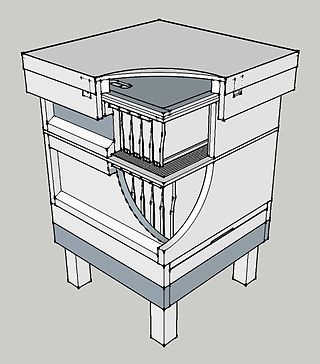
The Improved National Beehive was a form of Langstroth beehive standardized by two British Standards. The same standard contained the specification of the Smith beehive: these two forms represent the most popular designs used in the UK.

Flow Hive is a beehive brand with a unique honey frame designed to allow honey extraction without needing to open the beehive. During extraction, visibly bees are disturbed less than during other methods.

Franz Hruschka, Franz von Hruschka, Francesco De Hruschka, František Hruška was an Austrian/Italian of Czech origin officer and beekeeper known as the inventor of the honey extractor, an invention he presented in 1865 at the Brno Beekeeper Conference.
In beekeeping, in a Langstroth hive, burr comb, also known as brace comb and bridge comb, are portions of honeycomb built by the bees in other places than in the intended place in the frames. Burr comb is commonly found on the top of frames, particularly if the hive has been assembled with a void above the frames; burr comb may also be found hanging from the bottom of frames, if the frame itself is too shallow in height for the height of the hive it has been put in. Burr comb can cause problems if they join together frames on the hive which should stay separate.


